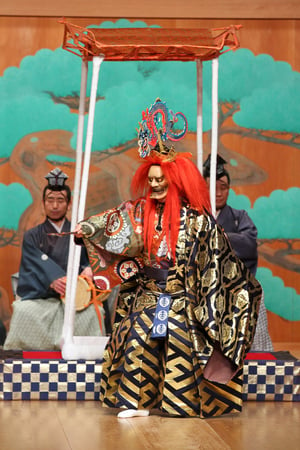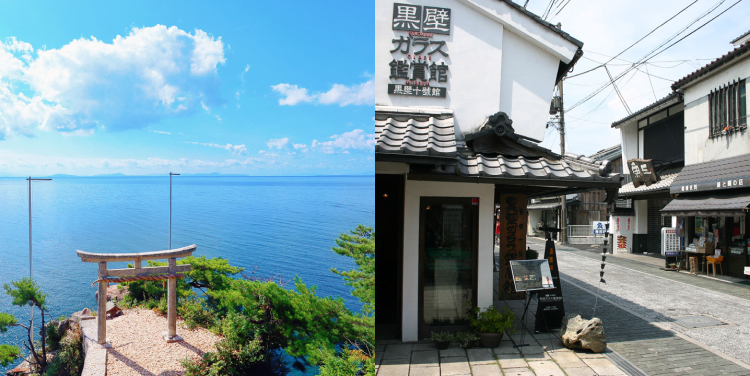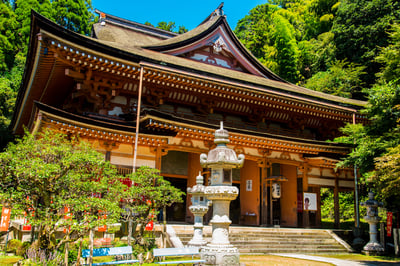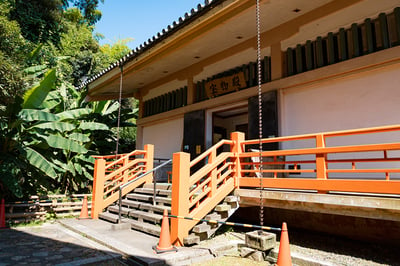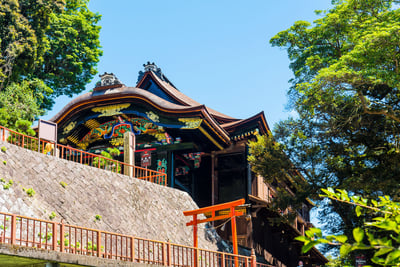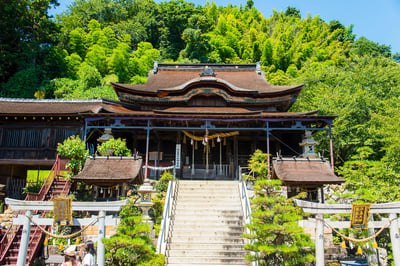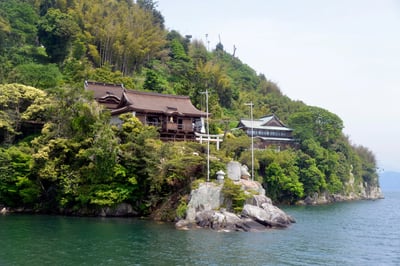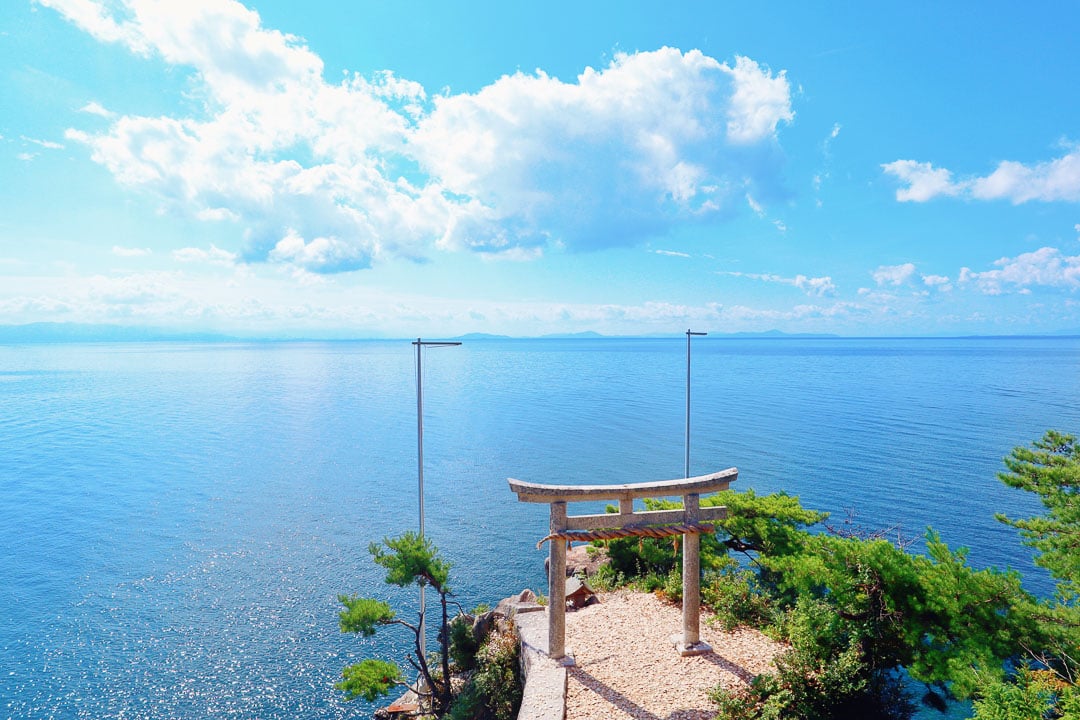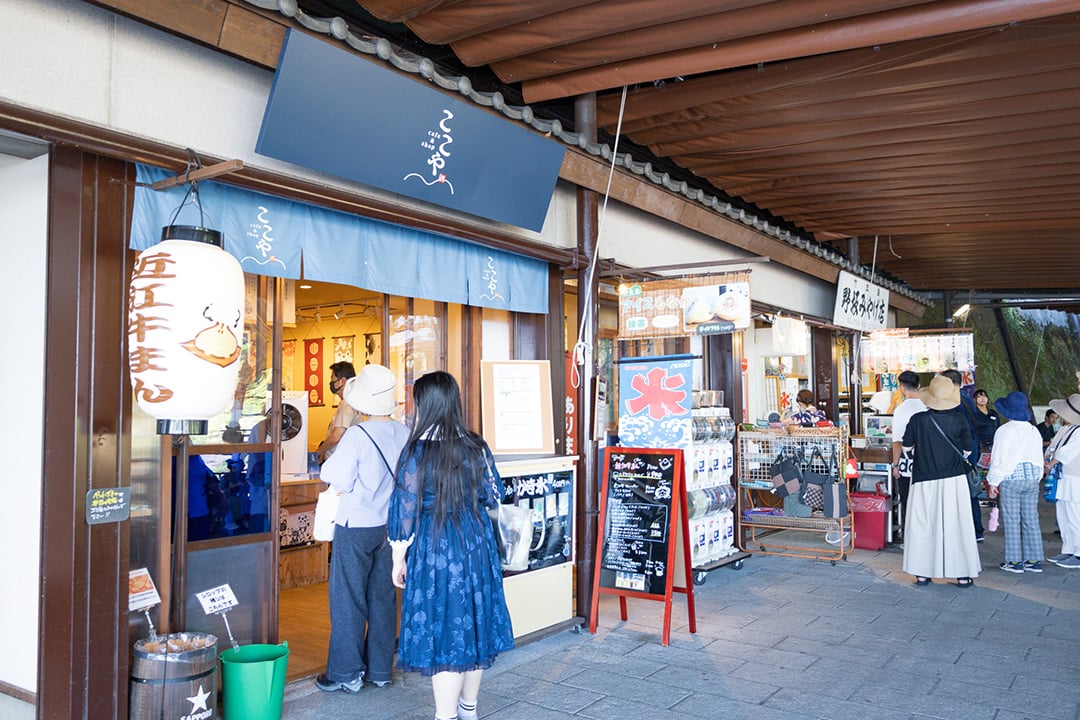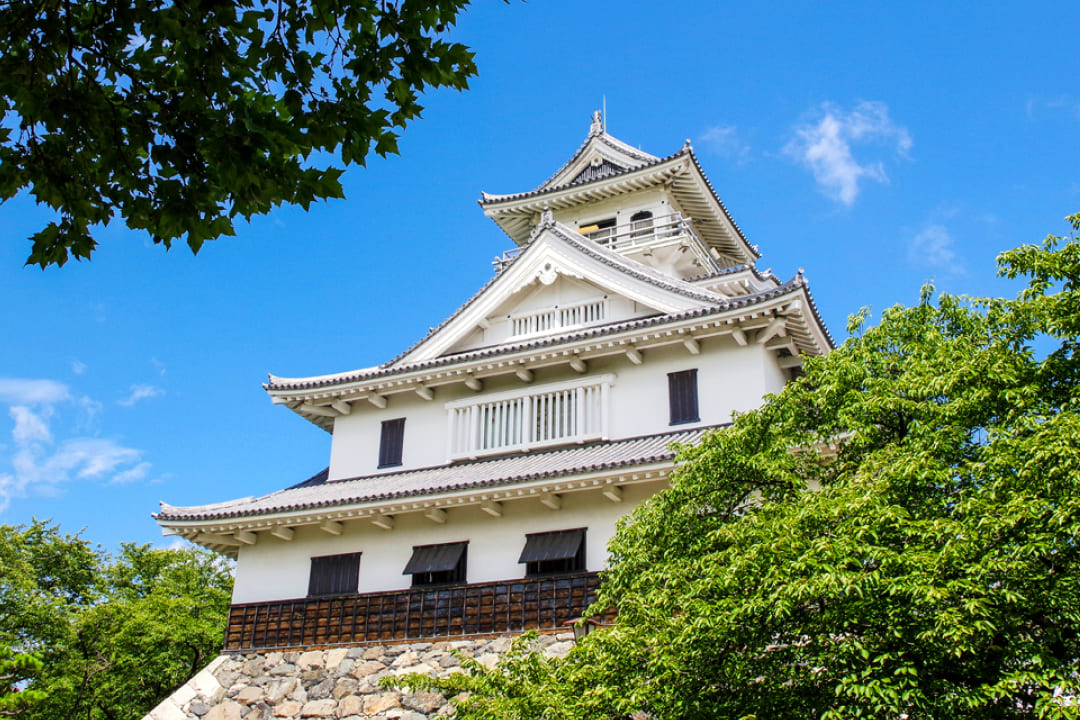Chikubu Island
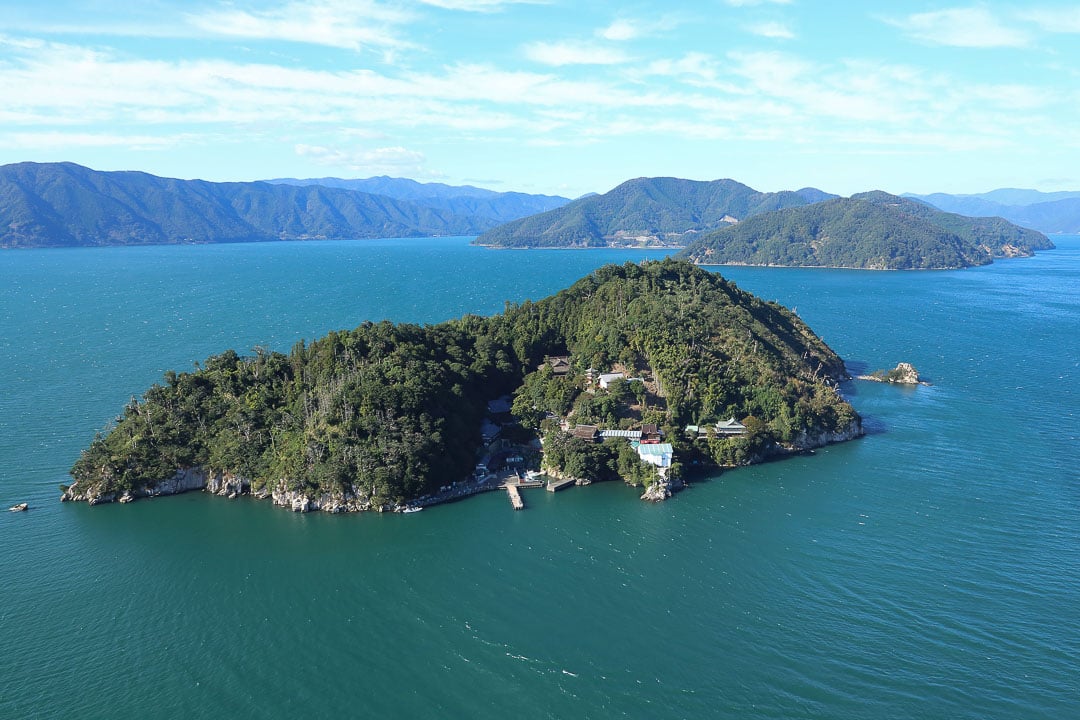
Chikubu Island is a small island in Lake Biwa, with a circumference of about 2 kilometers. The entire island is shrouded in a mystical atmosphere and is gaining attention as a power spot. The Noh play "Chikubushima" is set on this island. It tells the story of gods, such as "Benzaiten" and "Dragon God", enshrined in the island's temples, who promise to save the people from confusion and protect the country.
Synopsis of the Noh Play "Chikubushima"
A Refreshing Tale of the Gods Unfolding Amidst the Spring Scenery on the Lake
A group of officials travels to the island and boards a fishing boat with an old man and a young woman. As they admire the views from Lake Biwa, they soon arrive at the island, where the old man guides them to the Benzaiten-do. Noticing that the woman from the boat also comes along, an official asks if the island is forbidden for women. The old man and woman explain that since Benzaiten is a female god, there's no gender segregation on the island. Later, the old man and woman reveal they are not humans. Soon, the woman appears as Benzaiten and performs a dance, while the old man manifests as a dragon, offering treasures before vanishing.
